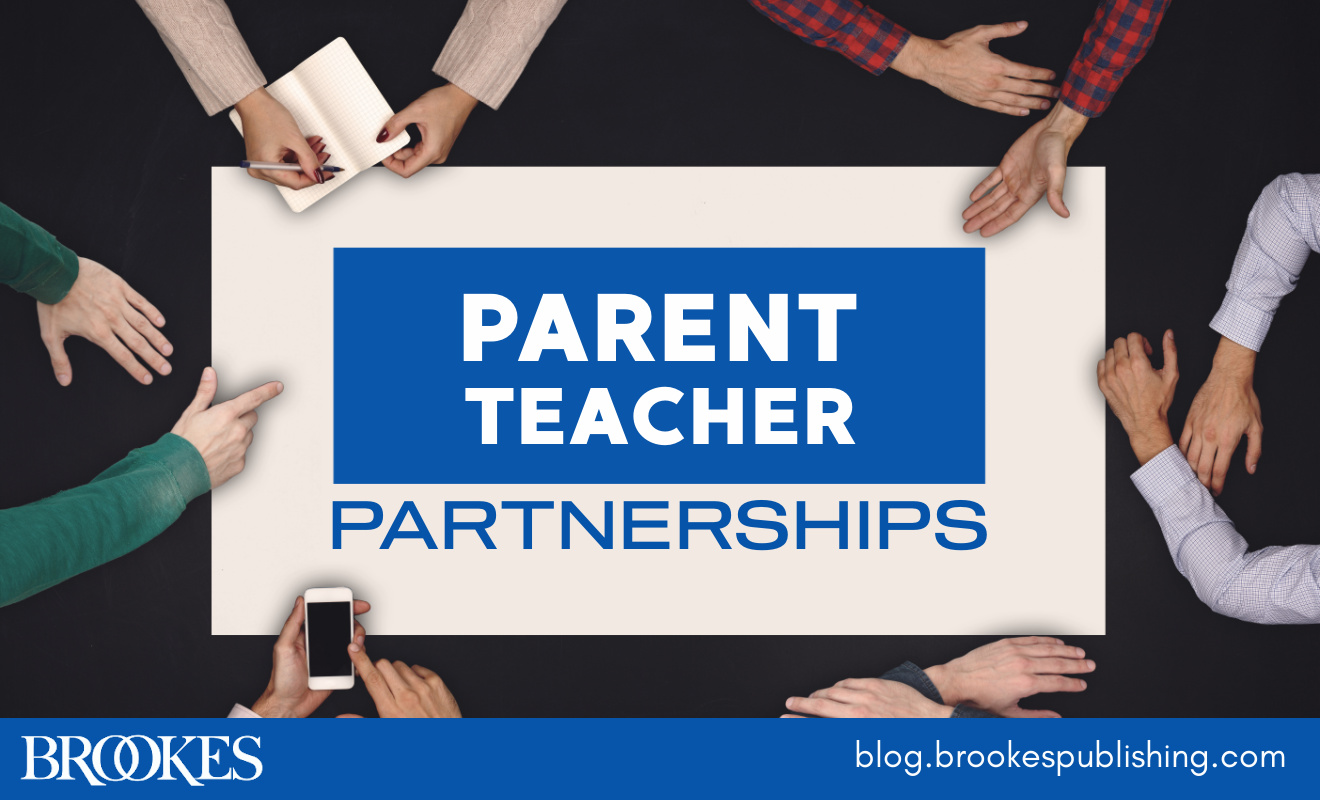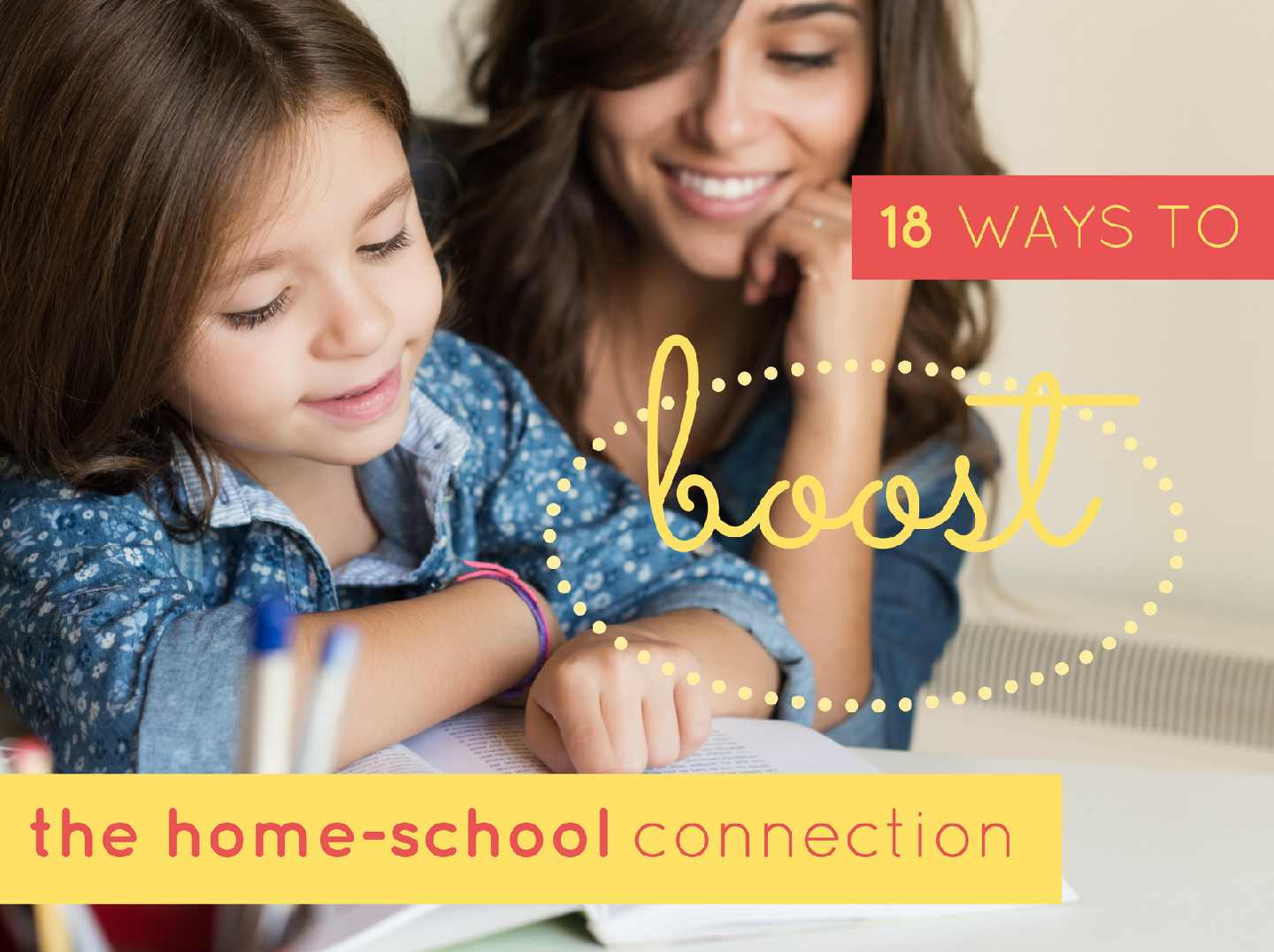11 Tips for Successful Parent-Teacher Partnerships
August 10, 2021
Nurturing the home-school connection helps students continue learning at home and helps parents stay involved and engaged with their child’s education and development. In today’s post, we’re sharing 11 practical tips you can use to form strong and effective partnerships with parents and other family members. Excerpted and adapted from five key Brookes books (see the end of the article for the full list), these strategies will help you ensure that you’re on the same page with your students’ families—and that you maintain sensitive, productive communication with them over the course of the entire school year.
 Identify and respect family priorities. Families may have different ideas about what meaningful goals for their child will look like. Be sure to talk to families early in the year and establish what their most important, highest-priority goals are for their child. For some families, it may be a specific area of academic achievement, such as improving the child’s skills in literacy or math. For others, it may be a social area or a behavioral issue. You can maintain your expertise as a teacher while fully acknowledging the goals and insights of parents and other family members. Assessing parents’ priorities, discussing instructional strategies with families, making sure all team members know about these priorities, and regularly reporting progress are keys to the home–school partnership.
Identify and respect family priorities. Families may have different ideas about what meaningful goals for their child will look like. Be sure to talk to families early in the year and establish what their most important, highest-priority goals are for their child. For some families, it may be a specific area of academic achievement, such as improving the child’s skills in literacy or math. For others, it may be a social area or a behavioral issue. You can maintain your expertise as a teacher while fully acknowledging the goals and insights of parents and other family members. Assessing parents’ priorities, discussing instructional strategies with families, making sure all team members know about these priorities, and regularly reporting progress are keys to the home–school partnership.
Consider the effects of systemic inequities. Keep in mind that while COVID-19 did not (and does not) discriminate, systemic inequities set up some groups—especially communities of color and those living in rural areas—to encounter more barriers to resources and opportunities. The pandemic exacerbated the challenges faced by marginalized families and created even more adversity and health risks. Be very mindful of the individual needs of traumatized youth who have experienced the impact of systemic inequities—and become what trauma expert Jen Alexander calls an “accomplice for change” within and beyond your school community. (NASP has some good social justice resources that will help you engage in constructive dialogue about issues like race, privilege, and prejudice—and bring about positive change in classrooms and communities.)
 Ask questions to learn about families. Before you can make a real difference in the lives of your students and their families, you’ll need to know more about them. Start by focusing on the immediate goal of inviting input from families as your school reopens. Consider asking questions like these (and arrange for translation services when needed):
Ask questions to learn about families. Before you can make a real difference in the lives of your students and their families, you’ll need to know more about them. Start by focusing on the immediate goal of inviting input from families as your school reopens. Consider asking questions like these (and arrange for translation services when needed):
- What would you like us to know about your family and child(ren) right now? Consider what’s going well and what you wish could be going better.
- What brings your family joy?
- What feelings have you and your child(ren) experienced during the pandemic?
- How did distance learning go? What concerns did you have? Were there any parts of not being in school that helped your child(ren)?
- What’s it like to think about going back to school?
- What do you and your child(ren) need as we create and navigate this new normal together?
- What worries do you or your children have?
- If there was one thing you wish we would change about our school, what would it be? Why?
To get answers to these questions, you might send a survey or facilitate face-to-face meetings. (But keep in mind that some of the families you would benefit from hearing from may not feel safe in sharing their perspectives.)
Establish consistent, ongoing communication. Throughout the year, your students’ families should always be able to advocate for their child and access up-to-date information about their child’s education. This means you should make a plan to regularly share information about the child and fully include families in team discussions and meetings. Find forms of communication that work for everyone involved; you might try phone calls, emails, a Google Document or DropBox folder that all team members have access to, or even an educator–family notebook that can be carried from school to home each day by the student. Whatever forms of communication you decide to use, it’s important that you have the opportunity to engage in daily or weekly discussion about a variety of critical issues, such as progress on IEP goals, homework and assignments, strategies or ideas to try (e.g., “Ian mastered VoiceThread last night, so maybe he could incorporate that into his oral history project next week.”), “heads-up” alerts (e.g., “Danny woke up late this morning, so he’s feeling a bit frustrated.”), and notes of praise and concern (e.g., “Kate rocked the science experiment!”).
Use everyday language. Families may feel excluded from the planning process when members of the school team use unfamiliar educational terms in home–school communications. Always be aware of the distance you can create when you use a lot of professional jargon, and minimize its use whenever possible. If a technical term or phrase is needed when you’re communicating with families, use a common word or phrase and put the technical term in parentheses—or, if you’re speaking, define the term so the meaning is clear. These seemingly minor adjustments to your language can have a big cumulative impact on the partnership between home and school.
 Accentuate the positive. Some parents may be accustomed to hearing from teachers only when there’s “bad news” to share. To build trust and strengthen relationships with families, avoid communicating only in difficult moments. Telephone calls, conferences, and notes home should be conduits for sharing all types of news—good as well as difficult. Write to or call families to report on their child’s latest achievements and triumphs, ask questions about how you can best support their child, and share tips and ideas that seemed to work well for the student in your classroom. This “accentuate the positive” practice is effective not only for sustaining home–school relationships, but also for encouraging proactive conversations that help both you and families craft better supports for students.
Accentuate the positive. Some parents may be accustomed to hearing from teachers only when there’s “bad news” to share. To build trust and strengthen relationships with families, avoid communicating only in difficult moments. Telephone calls, conferences, and notes home should be conduits for sharing all types of news—good as well as difficult. Write to or call families to report on their child’s latest achievements and triumphs, ask questions about how you can best support their child, and share tips and ideas that seemed to work well for the student in your classroom. This “accentuate the positive” practice is effective not only for sustaining home–school relationships, but also for encouraging proactive conversations that help both you and families craft better supports for students.
 Respect family cultures. When you have a student who comes from a culture different from yours, spend some time learning about their culture—not to put the family into a box or stereotype them, but to be sensitive to the family’s norms and anticipate any issues that may come up. For instance, in some matriarchal cultures, the oldest female in the family drives all the decisions, and she is likely to be your student’s grandparent or even great-grandparent. In an instance like this, you may want to ask parents from a matriarchal culture to invite the grandmother to parent–teacher conferences and IEP meetings. (Always keep in mind that that cultural norms don’t mean that all families from a given culture will follow the same traditions or have the same belief systems. All families have their own individual dynamic that may or may not align with cultural background, so get to know each family in order to understand who they are and what they believe.)
Respect family cultures. When you have a student who comes from a culture different from yours, spend some time learning about their culture—not to put the family into a box or stereotype them, but to be sensitive to the family’s norms and anticipate any issues that may come up. For instance, in some matriarchal cultures, the oldest female in the family drives all the decisions, and she is likely to be your student’s grandparent or even great-grandparent. In an instance like this, you may want to ask parents from a matriarchal culture to invite the grandmother to parent–teacher conferences and IEP meetings. (Always keep in mind that that cultural norms don’t mean that all families from a given culture will follow the same traditions or have the same belief systems. All families have their own individual dynamic that may or may not align with cultural background, so get to know each family in order to understand who they are and what they believe.)
Set up a special space for families. To ease separation anxiety—which may be especially pronounced when schools reopen in the fall—consider creating a “caregiver lounge” in each school building or even multiple caregiver lounges in different wings of a building. This caregiver lounge can be a spot where parents or other caregivers are welcome to come and go as little or as much as they want to, and children can ask to check in with them as needed for short periods. The lounge can provide family members access to coffee, tea, water, and snacks. Making this lounge available would help many families who wish to be present in case their children need to reconnect or would benefit from coregulation with them. Encourage a gradual fading in the use of the caregiver lounge, and encourage students to gradually transfer from seeking out caregivers for support to seeking connection with trusted school staff once those relationships are more secure.
 Take advantage of opportunities to connect. Look for opportunities throughout the year to connect with families and assure them that they’re an important part of their child’s educational team. Invite families into your classroom for whole-class performances, unit culmination presentations, gallery walks, and other special activities. Extend invitations to family training and education workshops at the school. Hold an IEP meeting or informal parent–teacher meeting in a coffee shop or diner in their neighborhood. Attend community events or activities that your students’ families are involved in.
Take advantage of opportunities to connect. Look for opportunities throughout the year to connect with families and assure them that they’re an important part of their child’s educational team. Invite families into your classroom for whole-class performances, unit culmination presentations, gallery walks, and other special activities. Extend invitations to family training and education workshops at the school. Hold an IEP meeting or informal parent–teacher meeting in a coffee shop or diner in their neighborhood. Attend community events or activities that your students’ families are involved in.
Put yourself in their shoes. Empathetic educators who attempt to understand families’ experiences and frames of reference are less likely to develop judgmental attitudes that could be damaging to the home–school relationship. Assume that the families of the children you teach are trying their best and that they love their children. Your role as a teacher is to provide and encourage active roles for families in the education of their child, while realizing that a particular parent’s ability to be active at any given time will vary due to any number of factors, including their job schedule, mental health status, access to reliable transportation, and additional family obligations.
 Keep it up. Strong home-school partnerships take time and care to build. Keep trying, even when (especially when) things don’t go right immediately. Education professor Linda A. Davern, author of the Building Partnerships with Parents and Caregivers section of Quick-Guides to Inclusion, says: “Many parents with whom I spoke thought that schools gave up too quickly and that some personnel were quick to dismiss parents who didn’t attend meetings. These parents felt that building partnerships took commitment and vision over the long term and that the degree of parent participation, for many families, was a direct result of school practices. They suggested looking at how schools share information with parents, how schools can demonstrate more flexibility in setting up meeting times with parents, and ways to assist parents in connecting with each other in order to provide assistance, such as alternating child care to free each other to attend planning meetings. As one parent put it, school personnel need to ‘make it happen’; that is, to extend themselves and do what needs to be done to build partnerships with parents.”
Keep it up. Strong home-school partnerships take time and care to build. Keep trying, even when (especially when) things don’t go right immediately. Education professor Linda A. Davern, author of the Building Partnerships with Parents and Caregivers section of Quick-Guides to Inclusion, says: “Many parents with whom I spoke thought that schools gave up too quickly and that some personnel were quick to dismiss parents who didn’t attend meetings. These parents felt that building partnerships took commitment and vision over the long term and that the degree of parent participation, for many families, was a direct result of school practices. They suggested looking at how schools share information with parents, how schools can demonstrate more flexibility in setting up meeting times with parents, and ways to assist parents in connecting with each other in order to provide assistance, such as alternating child care to free each other to attend planning meetings. As one parent put it, school personnel need to ‘make it happen’; that is, to extend themselves and do what needs to be done to build partnerships with parents.”
EXPLORE THE BOOKS
Check out the books behind today’s blog post:
Strategies 1, 5, 10, and 11 adapted from Quick-Guides to Inclusion, edited by Michael F. Giangreco, Ph.D., & Mary Beth Doyle, Ph.D.
Strategies 2 and 3 adapted from Supporting Students and Staff After COVID-19, by Jen Alexander, M.A., NCC, SB-RPT
Strategy 4 adapted from The Educator’s Handbook for Inclusive School Practices by Julie Causton, Ph.D., & Chelsea P. Tracy-Bronson, M.A.
Strategy 6 adapted from “You’re Going to Love this Kid!”, Second Edition, by Paula Kluth, Ph.D.
Strategy 7 adapted from Launching a Career in Special Education, by Elizabeth A. Potts, Ph.D., & Lori A. Howard, Ph.D.




Write a Comment
Your email address will not be published. Required fields are marked *
Post a Comment